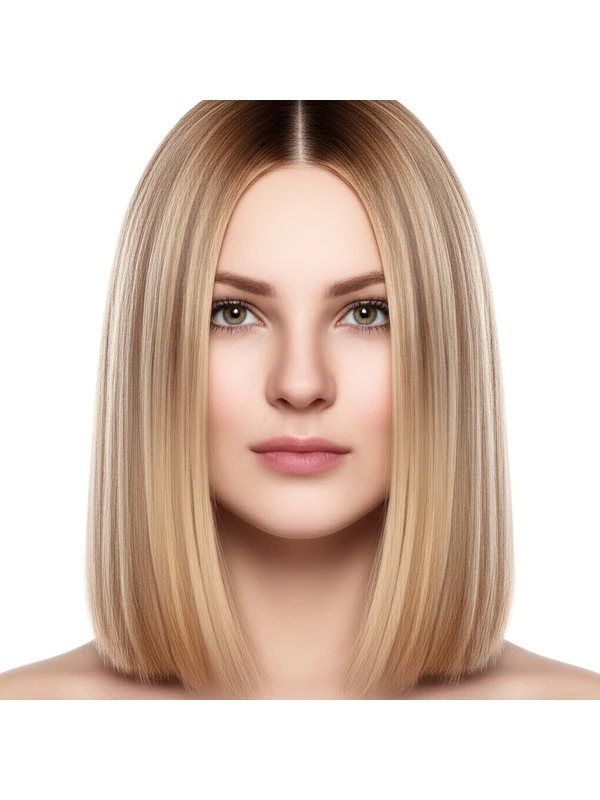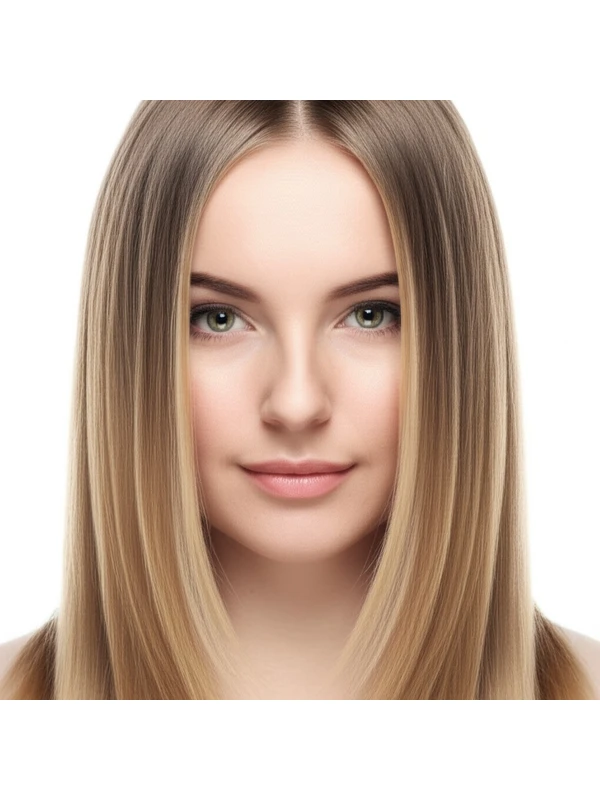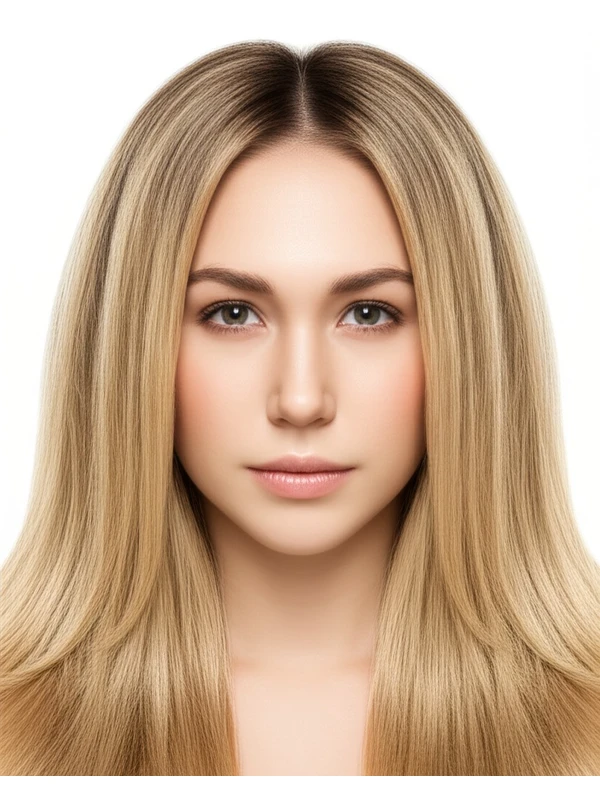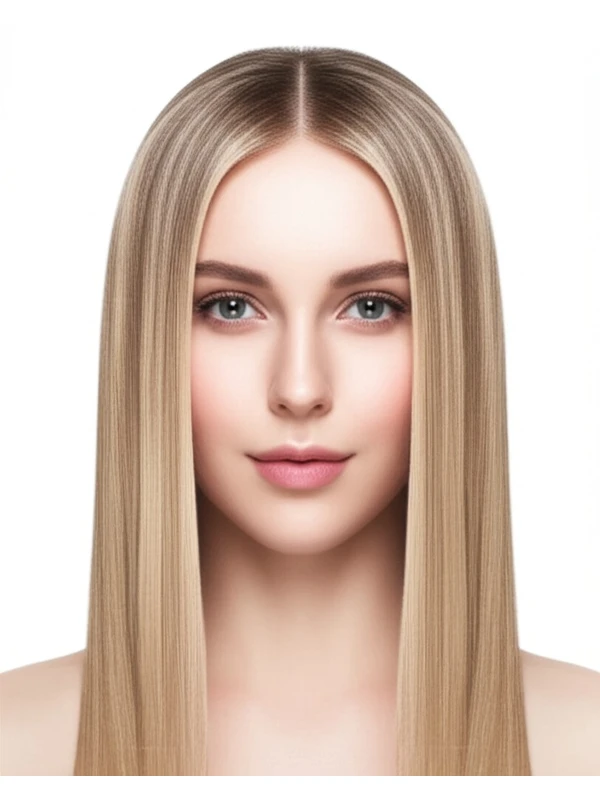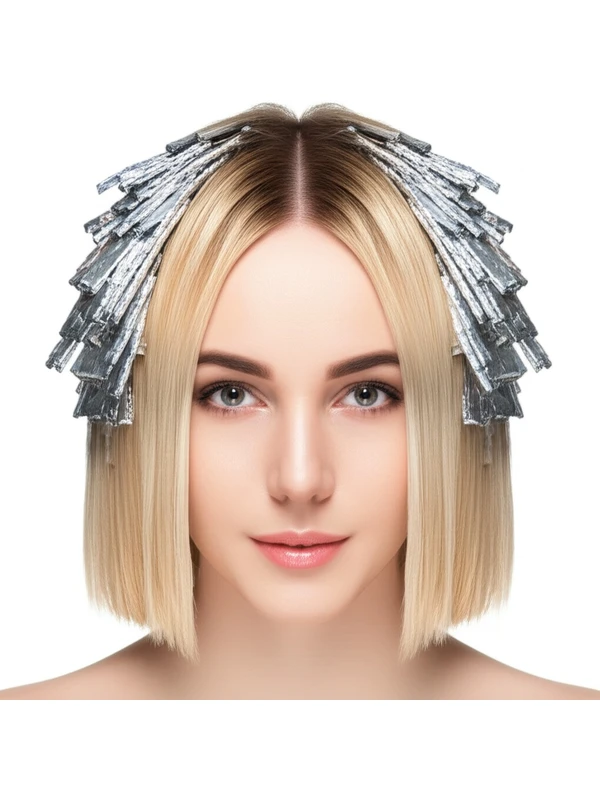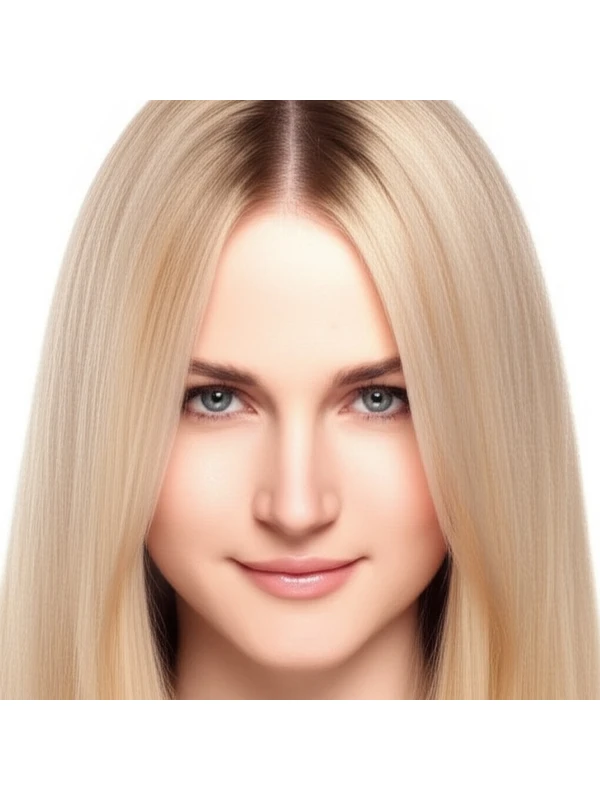#Halo Highlights: A Radiant Glow for Every Hair Type
Halo highlights are a popular hair coloring technique designed to create a soft, dimensional look that mimics the effect of natural sunlight catching your hair. They're known for their subtle brightness and effortless feel – let’s dive into everything you need to know.
#1. What Are Halo Highlights & How Do They Work?
Halo highlights involve strategically placing lighter pieces throughout the top section of your hair, around the face like a halo (hence the name!). This placement creates visual lift and dimension without significantly lightening the overall color.
Tools Used:
- Foil: Standard foil is often used to isolate sections for precise lightening.
- Balayage Brush/Foils: Depending on stylist preference, can be used instead of traditional foils.
- Lightener & Developer: The specific product will depend on your natural color and desired level of lift (more on that later).
- Toner (Optional): Used to refine the tone of the highlights after lightening.
Placement:
The key is placement! Highlights are focused primarily around the crown, hairline, and face-framing areas. The stylist will typically avoid highlighting the lower layers heavily. They’ll often use a “money piece” – more prominent highlights directly framing the face – to enhance facial features.
Timing:
Processing time varies based on your natural hair color, desired lift, and developer strength. It can range from 20-45 minutes, followed by rinsing, toning (if needed), and styling.
#2. Best Use Cases: Achieving Your Hair Goals
Halo highlights are incredibly versatile and achieve a variety of aesthetic goals:
- Adding Dimension: They instantly add depth and movement to flat or one-dimensional hair color.
- Root Blurring: The subtle placement helps blend the grow-out line, making touch-ups less frequent.
- Face Framing: Highlights around the face brighten your complexion and draw attention to your features.
- Soft Coverage (Subtle Lightening): They provide a gentle lift without a drastic color change – perfect for those wanting just a hint of brightness.
- Youthful Appearance: The highlights can soften facial lines, creating an overall youthful look.
#3. Who Are Halo Highlights For?
Halo highlights are surprisingly flattering on many people! However, certain factors influence how well they'll work:
- Natural Color Level: Works best on levels 2-6 (light brown to dark blonde). Darker hair will see a more noticeable lift.
- Undertone: Consider your skin’s undertone. Warm skin tones look great with golden or honey highlights, while cool skin tones shine with ash or beige tones.
- Hair Type/Texture:
- Straight Hair: Highlights create a beautiful shimmer and movement.
- Wavy Hair: Enhances natural waves for added texture and definition.
- Curly & Coily Hair: Requires careful placement to avoid disrupting curl patterns; highlights can add shine and dimension, but ensure the stylist is experienced with textured hair.
- Hair Density: Works on all densities – from fine to thick. The amount of highlighting will be adjusted accordingly.
- Hair Length: Suitable for all lengths, though they are most impactful on medium-to-long styles.
- Lifestyle: Ideal for those seeking a low-maintenance look with subtle brightness and minimal root upkeep.
#4. Halo Highlights vs. Similar Techniques
Understanding the differences between halo highlights and other coloring techniques is crucial:
- Balayage: Balayage is a freehand painting technique that creates softer, more blended highlights overall. It’s less defined than halo highlighting.
- Foilyage: A hybrid of balayage and foiling – it combines the hand-painted application of balayage with the precision of foil placement for more controlled lightening.
- Traditional Highlights: Traditional highlights use a much more structured pattern, often resulting in bolder lines of contrast. Halo highlighting is softer and less defined.
- Root Smudge/Shadow Root: These techniques focus on blending the roots to create a seamless transition from darker roots to lighter ends. Halo highlights can complement these techniques but aren't inherently the same.
#5. Maintenance & Longevity
Keeping your halo highlights looking their best requires some planning:
- Salon Timing: Expect touch-ups every 6-12 weeks, depending on how quickly your roots grow and how much lift you initially achieved.
- Toner/Gloss Refresh: Toners help maintain the desired tone of the highlights and add shine. A gloss can be added between color appointments to boost vibrancy.
- Grow-Out Behavior: The soft placement means the grow-out is gradual and less noticeable than with traditional highlights.
- Budget & Time Planning: Halo highlighting typically costs more than a single process color, ranging from $150-$400+ depending on salon location, stylist experience, and hair length/density. Factor in toner appointments as well.
#6. At-Home Care Tips
Proper care extends the life of your halo highlights:
- Wash Cadence: Wash less frequently (2-3 times a week) to prevent color fading.
- Heat Protection: Always use heat protectant spray before using any hot styling tools.
- Color-Safe Products: Use shampoos and conditioners specifically formulated for colored hair. Look for sulfate-free options.
- Purple Shampoo/Conditioner: For blonde highlights, these can help neutralize brassiness.
#7. Pros & Cons
Pros:
- Low maintenance grow-out
- Adds dimension and brightness without drastic change
- Face framing effect enhances features
- Versatile – suits many hair types and colors
- Softens facial lines
Cons:
- Can be more expensive than a single process color.
- Requires skilled stylist for optimal placement, especially with textured hair.
- May not provide enough lift for very dark or dense hair.
#8. Salon Consultation Script Prompts
Your consultation is key to achieving the perfect halo highlights! Your stylist should ask about:
- What are your goals for this color change? (e.g., more dimension, brighter face)
- Do you prefer warm or cool tones?
- How much time and money are you willing to invest in upkeep?
- Are there any areas of your hair you don’t want highlighted?
- What is your current haircare routine (products, heat styling)?
#9. Frequently Asked Questions
- Can I get halo highlights if my hair is very dark? Yes, but it will require more processing time and potentially multiple sessions to achieve a noticeable lift. Be prepared for the cost and potential impact on hair health.
- Will halo highlights damage my hair? Any lightening process can cause some dryness or damage. A skilled stylist will use appropriate products and techniques to minimize this, but it's important to communicate your concerns.
- How long do halo highlights last? The color itself lasts until the roots grow out (typically 6-12 weeks). The brightness fades gradually over time.
- Can I do halo highlights at home? While possible, it’s best left to a professional for optimal results and to avoid damage, especially with complex hair types or colors. Placement is critical!
- What if my undertones are mixed (e.g., both warm and cool)? Your stylist can blend tones to create a balanced result that complements your skin.
- Will halo highlights make my hair look brassy? Brassiness can occur, especially with warmer tones or improper aftercare. Using purple shampoo/conditioner and professional toners can help prevent this.
- Can I get halo highlights if I have previously colored my hair? It depends on the condition of your hair and what color it is currently. A strand test is always recommended to assess how your hair will react to lightening.
- How does halo highlighting differ from babylights? Babylights are even finer, more subtle highlights that create a very natural, blended look. Halo highlights have slightly thicker pieces and are often placed with more intentionality around the face.
